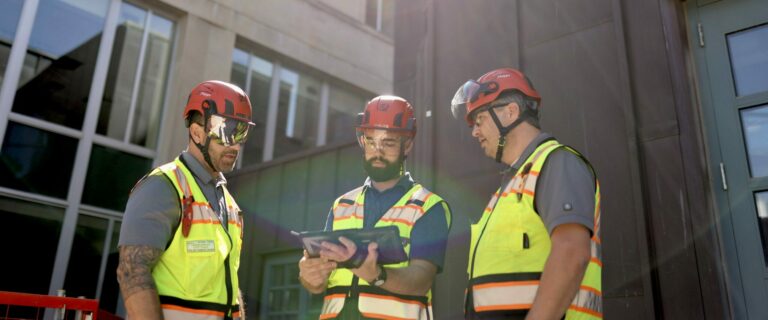By Matt Paull, HSE manager, G.H. Phipps Construction Cos.

In 2021, GH Phipps launched a pilot program to test helmets and accessories in place of traditional hard hats. We distributed more than 65 helmets in the field, gathering feedback after several months, including extreme weather seasons. This action was proactive, to determine what was best for our 350 employees.
With a look to the future, we wanted to consider our fall protection options and address realistic scenarios. If an employee were to fall, would a traditional hard hat fall/slip off? How about a fall resulting in contact with a vertical surface? That discussion sparked our ten-month helmets pilot program.
As HSE manager, I’m proud to be at a company that believes in and provides for, the protection of our employees. With the feedback we received from our test run, we found it was in everyone’s best interest to go company-wide with the replacement of traditional hard hats. The risk of a suspension-based hard hat falling off from impact was too great to overlook, and the ability for any field employee to suffer even a side impact was evidence enough to make the switch.
It’s no secret that hard hats were first required in 1931 for the construction of the Hoover Dam, and OSHA’s standard for hard hats was last visited in 1989. While hard hats served their purpose for a time, it has become clear that the improved protection offered with new helmet designs is the future of the industry. Head protection is part of personal protective equipment (PPE), which, in the safety world, is our first and last defense. Having the ability to not only protect the top of the head during impact but also address side impact becomes the game changer. Helmets prevent head and brain damage.
Per the Bureau of Labor Statistics, May 4, 2022: In 2020 – more than one in five workplace deaths occurred in the construction industry. Just over one-third of those were due to falls, slips, and trips, and were almost entirely from falls to a lower level. What did we find out before implementing? First, change isn’t impossible. Yes, when considering helmets, you may hear comments like, “Did you ride your bike to work or are you planning to go climbing?” Let’s face it – technology exists to better our lives. During our Safety Event — our official helmet launch — we addressed all 350 employees. Our opening statement was: “If you had an unfortunate fall today – which would you prefer to be wearing: a hard hat or a helmet?”
When reviewing our pilot program, we reviewed the type of helmets, where each employee worked, and the hazards they faced. We found vented helmets, without accessories, to be a sufficient standard. For our employees working outside, the sombrero/sunshade made the most sense. We also found the mesh screen, and full face shield assist (with safety glasses under like other face shields) advantageous during pumping. This style was better to see and clean afterward, being free from scratches like a normal face shield. Requiring our employees to wear the chin strap was a must from day one, as it’s like wearing a seat belt. While it may feel different at first, over time it will become second nature.
We recognized that seasoned employees had, in some cases, been wearing hard hats for decades. These employees required additional time to get used to helmets. However, patience with this has shown to be very rewarding, hearing back even as early as a month later how much they appreciate the helmet. As for the visors/half-face shield, it has the ANSI Z87.1 rating. We need to educate users that when wearing these, there is a perception one must become accustomed to.
It’s the feeling that you are in a bubble. Workers need to be aware of the nose piece that gives an illusion of peering through bifocal glasses. One must orient oneself with their hand to understand the illusion before walking onto steps or curbs. A final benefit when considering helmets is longevity; the shelf life in most cases is 10 years.
For G.H. Phipps, we are in a better place having switched to helmets. The cost of a hard hat to helmet is roughly 1/5 the price initially, so it may seem like a costly switch, but I would suggest considering the overall expense of a fall. An employee’s recovery and costs incurred are so much greater when wearing a hard hat. When reviewing your safety program for helmets, consider insurance benefits with improved protection and financial savings. I inquired with several peers who have helmets and never received a negative comment with respect to value.
At GH Phipps, we celebrate the successful deployment of companywide helmets. We take comfort in knowing that our amazing employees are safer with the improved equipment. Much appreciation to our executive leadership for embracing the initiative to make this possible. As we plan past our 70 years, we can honestly say this safety enhancement makes us better today than we were yesterday.









